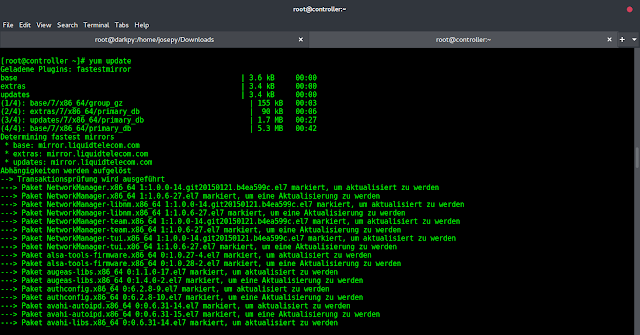
Businesses use the internet for their operations as it makes them more efficient and creates growth opportunities. Unfortunately, its benefits come with the threat of cyberattacks. Cyberattacks are malicious acts by people aiming to infiltrate, disrupt, or compromise computer networks and digital infrastructure. This harms businesses because a compromise or collapse of their IT infrastructure can disrupt their operations and negatively impact their bottom line. As a result, they need proactive cybersecurity to ward off these threats and protect themselves.
Understanding Cyber Threats
There are many cyber threats, including viruses, malware, spyware, phishing attacks, ransomware, and DDoS attacks. These threats leverage the vulnerabilities in network infrastructure, computer systems, and software applications. They compromise software and data integrity and can be costly to resolve. Cybercriminals use sophisticated techniques to breach computer networks and frequently adapt their strategies to evade new cybersecurity measures.
If a business’s computer system or network is well-protected, cybercriminals resort to social engineering tactics to trick employees into giving them a port of entry. This is mainly done through phishing attacks, where an employee receives a malicious link in a text message or email. Once they click this link, the sender (cybercriminal) will have access to their computer and possibly the organization’s entire IT infrastructure.
Types of Cyber Threats
There are many types of cyber threats. They give cybercriminals flexibility when trying to gain unauthorized entry into a company’s computer network. These are the common ones to look out for:
Malware
These are malicious software designed to penetrate computer systems to cause harm. Viruses, trojans, worms, spyware, and ransomware are all examples of malware. They can infect computers if they interact with sketchy website ads, email attachments, and compromised software applications and files.
Phishing attacks
They rely on the ability to trick people into clicking malicious links or releasing sensitive information like passwords, personal data, and credit card details. Cybercriminals impersonate trustworthy parties and send messages to unsuspecting employees asking for sensitive information. Sketchy websites display pop-up messages and urge people to click on them. Clicking these “messages” will give cybercriminals access to the computer.
DoS and DDoS attacks
Denial of Service (DoS) and Distributed Denial of Service (DDoS) disrupt website and server availability. It affects business operations by flooding their computer servers with traffic until they are overwhelmed. This makes it inaccessible to employees that want to perform their work tasks.
SQL injection attack
These attacks take advantage of the vulnerabilities of web apps that use SQL databases. Cyber attackers inject harmful SQL codes in user input fields to trick the app into executing destructive database commands. Successful SQL injections can give cyberattackers unauthorized entry into the system.
The Role of Antivirus Software
Antivirus software is an essential tool in the fight against cyber threats. They detect and block malicious software from infecting computers and IT infrastructure. They can also remove threats from infected computers to restore their integrity.
Antivirus software uses signature-based and behavior-based detection analysis to find threats. Signature-based detection compares computer files with a database of known malware signatures to find matches. Meanwhile, the latter monitors computer system activities to detect suspicious behavior.
It is better to prevent cyberattacks than to cure infected systems. Companies can achieve this by training their employees to recognize common attacks. Employees should also learn to avoid social engineering tactics and only use company devices to access trustworthy websites. Businesses should install reliable antivirus software on all their devices to detect and mitigate threats. Click to see a list of the best antivirus for businesses in 2023.
Features of Antivirus Software
Antivirus software is a core part of cybersecurity because it effectively detects and deals with threats. Here are some of its essential features:
Real-time threat detection
They constantly scan documents, downloaded files, software applications, and websites to detect threats in real time before they enter a computer network. Any infected file or program they find is quarantined or deleted to prevent the spread of malware in the system and limit the damage.
Cleansing of infected devices
Computers already infected with malware can be repaired with antivirus software. They have engines capable of scanning millions of files on a computer to find malware wherever they hide. The scanning engines will scour through the Windows registry, system files, and every location malware is likely to be seen to eradicate them.
Web protection
Cyber threats are commonly found on low-quality websites and the files people download from them. Antivirus web protection safeguards computers from these threats as they navigate the internet. The software analyzes website URLs, blocks them, and prompts the user if they are potentially malicious. It also indicates if files on the site are infected and prevent their download.
Email protection
Similarly to web protection, antivirus software detects malware and phishing messages in incoming and outgoing emails. Suspicious emails are sent to the spam folder and labeled as harmful to prompt a computer user to treat them cautiously. It also prevents the download of infectious files.
Firewall integration
Many antivirus programs have built-in firewall features or can integrate with the existing firewalls in a company’s IT infrastructure. Firewalls act as a barrier between computer systems and cyber threats. They monitor the traffic moving in and out of a computer network to detect suspicious activity.
Automatic security database updates
Most antivirus programs can update their security database automatically to recognize the latest cyber threats. Cyberattackers constantly create new malware and devise new means to infiltrate computer networks, so the program needs to be continuously updated.
Endnote
All businesses should know cybersecurity threats can disrupt their operations and affect their bottom line. Antivirus software can detect and mitigate these threats before they cause harm to the computer network. Its numerous features preserve data integrity and keep businesses running as intended. However, companies should not rely on the software for protection. They should train their employees to refrain from actions that give cybercriminals access to their IT infrastructure.

